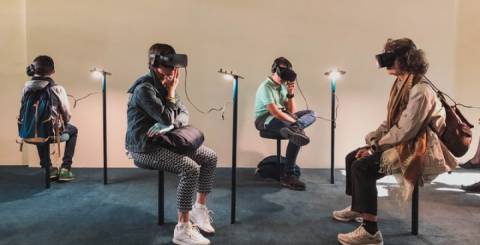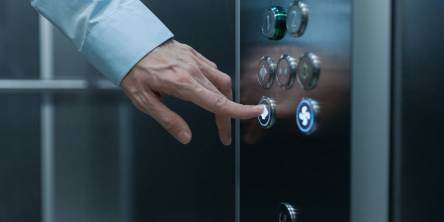Virtual Reality: Advantages and Applications in Retail

Virtual reality in retail was already gathering considerable steam in the market, thanks to its ability to transform customer experiences, help retailers reduce cost, etc. As predicted by tech analysts globally, VR as the technology will continue to disrupt countless industries. It is because today the shopping experience is beyond entering the store (either online or in-person).
The technology has made things easy to buy for consumers and firms alike. Businesses that have adopted creative virtual reality use cases at all layers of retail have realized that it aids with brand cohesion and consumer trust. It ultimately helps them sell more products in less time with improved customer satisfaction. However, the technology received a major boost ever since the pandemic started, since it offered retailers the opportunity to ensure continuity of business even if their target audience was at home.
However, the technology received a major boost ever since the pandemic started, since it offered retailers the opportunity to ensure continuity of business even if their target audience was at home. However, is there all there is to VR in the retail sector?
Here are some other use cases for VR in this sector.
- Improved shopping journey: Shopping, especially when it comes to items such as clothes, eyeglasses, furniture, shoes, etc., can prove to be a tad tricky for a variety of reasons. Say, a customer is unsure how the sofa they want to buy may look in their home’s hall. Thankfully, VR can easily address such issues, allowing retailers to offer a completely new level of shopping experience.
- Better engagement: There is no doubt about the fact that it is a Herculean task to figure out just how to get users to engage with the company. This is especially important for retailers due to the cut-throat nature of the competition they are currently facing in the market. VR as well as other mixed reality media can be easily leveraged in this regard, allowing retailers to check out how a particular piece of apparel may look on them or even how a piece of furniture will look in their own home. Such features and functionalities, then, boost customers’ engagement rates with the brand.
- Boost marketing campaigns: Marketing on its own is a challenging endeavor, but mix it with the context of retail and the challenges become even more tricky. So, what can virtual reality do about that, you ask? Well, virtual reality solutions can contribute plenty in the marketing department as well. For example, this technology can be used to help retail companies develop multi-dimensional advertisements and other material for marketing campaigns. Given the finicky nature of today’s customers, such new-age content can help quickly reel in more customer attention than your run-of-the-mill hoarding or newspaper ad or some such. Retailers can also use VR in combination with social media, using this union to encourage customers to engage with the brand, share experiences, leave reviews, etc.
- Employee training: Unlike what the layman may believe, working in retail is not as easy as ABC; in fact, most roles necessitate extensive training for employees, which can quickly result in humongous costs for the company. Thankfully, this issue is easily handled by virtual reality, which can help simulate requisite situations and set-ups for proper training of new joins in the retail store.
There is no denying that the retail market has become increasingly competitive, especially since e-commerce established a stronghold in the market. Despite all its challenges, the retail sector remains a lucrative sector, especially when you have modern technologies such as virtual reality, artificial intelligence, etc. in your arsenal.
Now, as demonstrated via the discussion above, virtual reality brings with it a particularly interesting scope for application to enable retailers to achieve new heights of success. So, if you too want to take such a modern approach to retail success, we recommend you get started on fortifying your retail store software development project with virtual reality tools and other such avant-garde technologies.
Similar Articles
Architectural 3D rendering price guide covering costs, factors, AI impact, and typical pricing for residential and commercial exterior and interior renders.
Most large organisations already know how hard enterprise application testing can be. You’ve got old and new systems talking to each other, custom code layered on vendor platforms
When it comes to working at heights, safety and efficiency are paramount. Aerial work platforms (AWPs) have revolutionized how professionals approach elevated tasks across countless industries, from construction sites to warehouse operations.
The modern age of customers expect constant availability, no matter what the offer. And for that, the market requires rapid innovation cycles. In such a high stakes environment, technology infrastructure is more than just a cost center.
When evidence seals fail, cases weaken. Explore how compromised chain of custody can derail investigations and jeopardize justice.
Compare hydraulic and traction residential elevators to find the best fit for your home. Learn how each system works, their pros and cons, space needs, energy use, and maintenance requirements.
Extend the lifespan of your commercial marina docks with proactive maintenance. Learn essential inspection routines, material-specific care, and safety tips to protect your investment and ensure long-term dock performance.
Learn the key factors in designing an engineered fall protection system. Discover how hierarchy of controls, task analysis, structural integrity, and fall clearance ensure safety and compliance.
Today, modern businesses face constant pressure to operate with maximum efficiency. This requires a technology infrastructure that is both agile and robust. However, the traditional model of on-premises data centers often has significant limitations. These legacy systems can drain valuable resources from teams.









